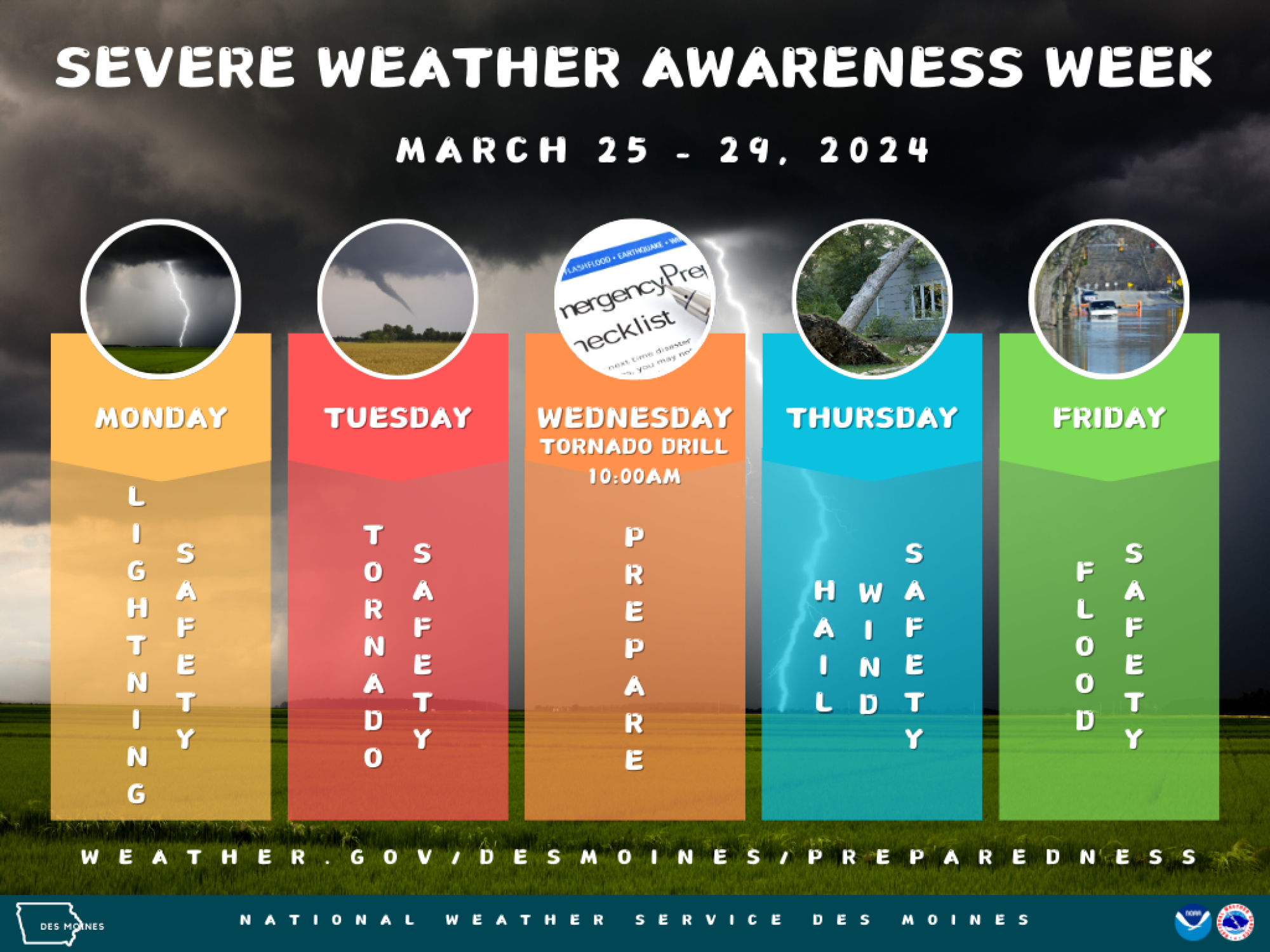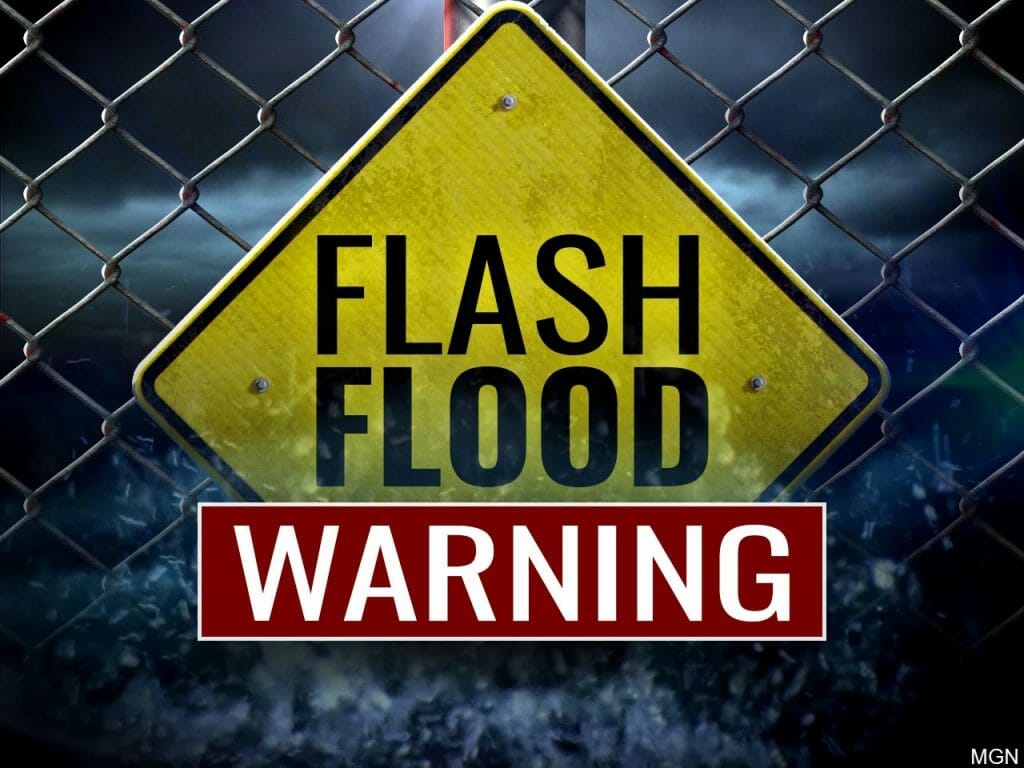Protecting Yourself And Your Family: Flood Safety Tips For Severe Weather Awareness Week Day 5

Table of Contents
Understanding Flood Risks and Preparation
Before a flood strikes, understanding your risk and preparing a plan is crucial for flood safety. This involves identifying potential threats and establishing procedures to protect your family and belongings.
Identifying Flood-Prone Areas:
Knowing your risk is the first step towards effective flood safety. Utilize available resources to determine your property's vulnerability:
- Use online resources: Websites like FEMA (Federal Emergency Management Agency) and NOAA (National Oceanic and Atmospheric Administration) offer flood risk assessments and maps. Input your address to check your property's flood risk.
- Review historical flood maps: Local authorities and municipalities often have historical flood maps showing areas prone to flooding. These maps illustrate areas affected by past floods, providing valuable insights into potential risks.
- Consider geographical factors: Pay attention to your elevation, proximity to rivers, streams, creeks, and low-lying areas. Properties near water bodies are inherently more susceptible to flooding.
Creating a Family Emergency Plan:
A well-defined family emergency plan is vital for flood safety. This plan should include:
- Designated meeting place: Choose a safe meeting point outside the flood zone, easily accessible to all family members.
- Evacuation route: Plan and practice an evacuation route to your designated meeting place. Identify multiple routes in case one becomes impassable.
- Emergency kit: Prepare a comprehensive emergency kit containing essential supplies:
- Water (one gallon per person per day for at least three days)
- Non-perishable food (enough for at least three days)
- Medications (prescription and over-the-counter)
- First-aid kit
- Flashlights and extra batteries
- Copies of important documents (identification, insurance policies)
- Whistle to signal for help
- Assigned roles: Assign specific roles and responsibilities to each family member to ensure efficient coordination during a flood emergency.
Protecting Your Home During a Flood Warning
Once a flood warning is issued, swift action is crucial for flood safety. Prioritize protecting your family and your home.
Pre-Flood Actions:
Taking proactive steps before the floodwaters arrive can minimize damage and ensure your flood safety:
- Move valuables: Relocate valuable items, electronics, and important documents to higher floors or safer locations.
- Protect furniture and appliances: Move furniture and appliances away from potential floodwaters to prevent damage.
- Unplug electrical appliances: Disconnect all electrical appliances to prevent electric shock.
- Sandbagging (if time permits): If time allows, sandbag vulnerable areas around your home to create barriers against floodwaters.
During a Flood:
Your primary concern during a flood is the safety of your family.
- Evacuate immediately: If authorities issue an evacuation order, evacuate immediately. Never attempt to drive or walk through floodwaters; the water may be deeper and faster-flowing than it appears.
- Turn off utilities: If it is safe to do so, turn off gas, electricity, and water to prevent further damage and hazards.
- Move to higher ground: Proceed to your designated meeting place or higher ground.
- Stay informed: Monitor news and weather reports for updates on the flood situation.
Post-Flood Safety and Recovery
After the floodwaters recede, recovering safely is paramount. Focus on your flood safety as you begin the cleanup process.
Returning Home After a Flood:
Before re-entering your home, assess the situation carefully:
- Check for structural damage: Inspect your home for structural damage before entering. Look for signs of foundation damage, cracks in walls, and other potential hazards.
- Beware of hazards: Be cautious of downed power lines, debris, and other hazards.
- Wear protective gear: Wear protective gear, such as boots, gloves, and eye protection when cleaning up.
- Contact insurance: Immediately contact your insurance company to report flood damages.
Cleaning and Repair:
Cleaning up after a flood requires careful attention to detail:
- Discard contaminated items: Discard any food or water that may have been contaminated by floodwaters.
- Handle debris cautiously: Exercise caution when handling flood debris, as it may contain hazardous materials. Dispose of contaminated materials properly according to local guidelines.
- Dry out your home: Thoroughly dry out your home to prevent mold growth. Use dehumidifiers and fans to accelerate the drying process.
Flood Insurance and Financial Preparedness
Financial preparedness is a crucial aspect of flood safety. Understanding insurance options and planning for potential expenses can significantly alleviate the burden of flood recovery.
The Importance of Flood Insurance:
Flood insurance is often overlooked, but it’s critical for flood safety and financial protection:
- Separate coverage: Flood insurance is typically not included in standard homeowner's or renter's insurance policies. You must purchase it separately.
- National Flood Insurance Program (NFIP): The NFIP is the primary provider of flood insurance in the United States. Check their website for information and to locate participating insurers.
- Policy review: Carefully review your policy to understand coverage limitations and requirements.
Financial Planning for Flood Recovery:
Prepare financially for potential flood damage:
- Emergency fund: Create an emergency savings fund to cover unexpected expenses related to flood damage and recovery.
- Supplemental insurance: Consider purchasing supplemental insurance to cover damages beyond your basic policy limits.
Conclusion:
This Severe Weather Awareness Week, prioritize flood safety for your family's well-being. By understanding flood risks, preparing a comprehensive plan, and taking necessary precautions, you can significantly mitigate the impact of flooding. Remember, prevention and preparedness are key to protecting your home and loved ones. Don’t wait for a flood warning – take action today and learn more about improving your flood safety. Review your emergency plan, check your flood risk, and ensure you have adequate insurance coverage. Invest in your flood safety today – your family's future depends on it.

Featured Posts
-
 Spectator Who Threw Bottle At Van Der Poel In Paris Roubaix Arrested
May 26, 2025
Spectator Who Threw Bottle At Van Der Poel In Paris Roubaix Arrested
May 26, 2025 -
 Bradford And Wyoming Counties Flash Flood Warning Until Tuesday Evening
May 26, 2025
Bradford And Wyoming Counties Flash Flood Warning Until Tuesday Evening
May 26, 2025 -
 Inside The Hells Angels History Culture And Organization
May 26, 2025
Inside The Hells Angels History Culture And Organization
May 26, 2025 -
 Paris Roubaix Bottle Throwing Incident Spectator Surrenders To Police
May 26, 2025
Paris Roubaix Bottle Throwing Incident Spectator Surrenders To Police
May 26, 2025 -
 I Naomi Kampel Stis Maldives Eikones Apo Tis Kalokairines Tis Diakopes Se Mpikini
May 26, 2025
I Naomi Kampel Stis Maldives Eikones Apo Tis Kalokairines Tis Diakopes Se Mpikini
May 26, 2025
Latest Posts
-
 Offre Limitee Samsung Galaxy S25 128 Go A 814 22 E
May 28, 2025
Offre Limitee Samsung Galaxy S25 128 Go A 814 22 E
May 28, 2025 -
 Test Et Avis Samsung Galaxy S25 512 Go Vaut Il Le Prix
May 28, 2025
Test Et Avis Samsung Galaxy S25 512 Go Vaut Il Le Prix
May 28, 2025 -
 Comparatif Prix Samsung Galaxy S25 128 Go Economisez Jusqu A E
May 28, 2025
Comparatif Prix Samsung Galaxy S25 128 Go Economisez Jusqu A E
May 28, 2025 -
 Samsung Galaxy S25 256 Go Caracteristiques Et Prix 775 E
May 28, 2025
Samsung Galaxy S25 256 Go Caracteristiques Et Prix 775 E
May 28, 2025 -
 Meilleur Prix Samsung Galaxy S25 128 Go 814 22 E Notre Selection
May 28, 2025
Meilleur Prix Samsung Galaxy S25 128 Go 814 22 E Notre Selection
May 28, 2025
